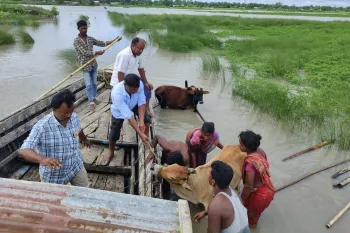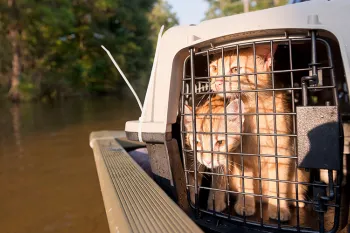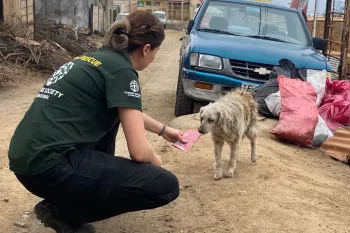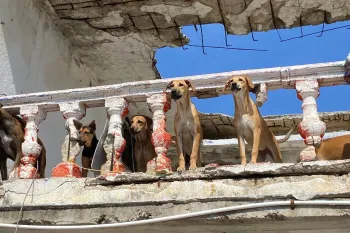I recently featured highlights of our disaster response efforts in the U.S., where an increasing number of communities are contending with extreme weather events. Importantly, our work focuses on immediate response in the aftermath of disasters and on preparedness and education, so that people and animals can remain as safe as possible.
The same is true of our work around the world, as in India, where, after recent landslides in Wayanad, Kerala, and floods in Assam, thousands of people are struggling to survive and rebuild their lives.
At the end of June, monsoon season struck Assam hard. Days upon days of rain caused the Brahmaputra River and its tributaries to flood so severely that it affected an estimated 2.4 million people and 1.5 million animals and destroyed 32,924 hectares of crops across the region.
Some of the most hard-hit areas could only be reached by boat, so our colleagues at Humane Society International/India rented boats, loaded them with supplies for animals in need, and set off to deliver their cargo.
Exactly a month later, no sooner had our responders returned from Assam, multiple landslides hit in two areas of Wayanad. After completing resupply, our team rushed out to the affected region to assist local authorities and support the efforts of people trying to recover and care for their animals.
This is what is so astounding about our teams and their devotion to helping animals. In the face of enormous obstacles, they find solutions. No crisis is dismissed as a lost cause. That is the steadfast spirit of our mission to fight the big fights for animals.
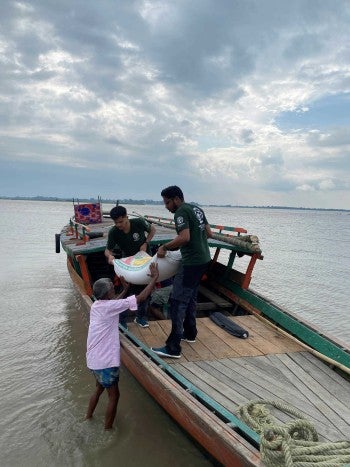
HSI
Our relief efforts in Assam started with a rapid needs assessment to set our priorities for helping people and animals and addressing the severity of the flooding’s impact. That evaluation involves collecting data through observations and interviews with disaster management authorities, affected individuals and community leaders.
A boat usually used for daily commutes across the river quickly became a key part of our response efforts in flooded areas, as our team distributed emergency animal feed; water; medical and veterinary supplies; and protective gear, such as tarpaulin sheets for shelter.
Thanks to close collaboration with local authorities and organizations Just Be Friendly, Anchalik Gram Unnayan Parishad and Humanitarian Aid International, we were able to provide relief to 10,000 animals and 2,250 families in the Barpeta and Dhubri districts of Assam.
The team encountered several challenges. Some kinds of animal feed weren’t available or were in limited supply. The number of vendors with adequate stock of crucial goods was very low, which necessitated sourcing and transporting feed from neighboring states such as West Bengal.
In Kerala, moving into the affected regions was difficult. Only the army and the National Disaster Relief Force were permitted to go in and search for missing people and animals, so our focus was on providing much-needed feed and medicine to stranded and starving animals who had survived the landslides but lost their community and families.
Our team was heartened by how actively government officials were involved in responding to animal needs, and we’re pleased, too, that the District Disaster Management Authority in Dhubri and in Wayanad agreed to disseminate our informational materials and commit to future capacity-building programs centering on disaster preparedness training, infrastructure and experiential learning programs for children.
The interests of animals and people are so often inextricably linked, and that is certainly the case in the face of increasingly frequent and devastating extreme weather events across the globe. It is more important than ever that we help each other, that we come together in our communities and that we build connections between local governments and organizations to ensure that people and animals have what they need to stay safe.
Follow Kitty Block @HSUSKittyBlock.
